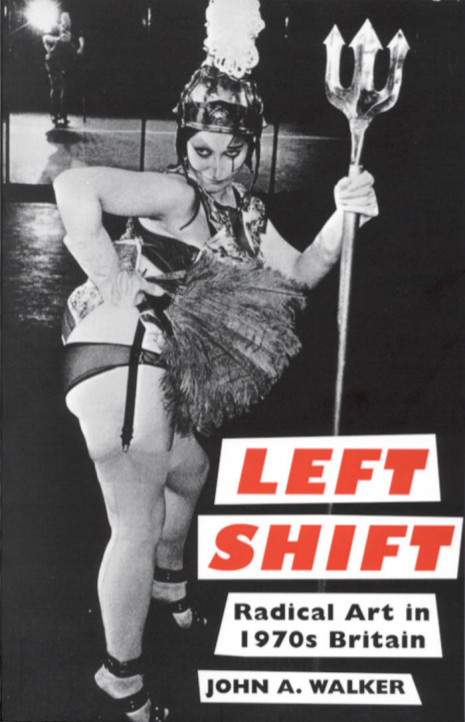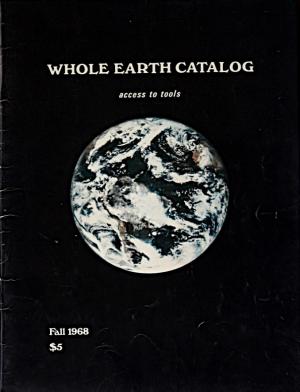John Albert Walker: Left Shift: Radical Art in 1970s Britain (2001)
Filed under book | Tags: · 1970s, art, left, political art, politics, radicalism, united kingdom

Compared to the 1960s, the 1970s is a neglected decade. This is a history of radical political art in Britain during the 1970s, art that sought to re-establish a social purpose. It argues that what was unique about the visual fine art of the decade was the impact of left-wing politics, women’s liberation and the gay movement. Artists discussed include: Rashid Araeen, Conrad and Terry Atkinson, Joseph Beuys, Derek Boshier, Stuart Brisley, Victor Burgin, John Drugger, Gilbert and George, Margaret Harrison, Derek Jarman, John Latham, Mary Kelly, Bruce McLean, David Madalla, Jamie Reid, Jo Spence, John Stezaker and Stephen Willats who responded to the historical events of a period marked by economic and political crises. A wide variety of art forms is covered: banners, drawing, film, community murals, painting, performance, photography, photomontage, posters, sculpture and video. Many radical artists challenged prevailing art institutions, such as the Arts Council, often establishing alternatives, like the Artist’s Union.
The book, which is set out on a year-by-year basis, also examines key conferences, exhibitions, galleries, magazines, organizations and critics; art theory and the various views of artists and critics meant that the 1970s was a decade of intellectual ferment.
Publisher I.B.Tauris, December 2001
ISBN: 9781860647666
304 pages
PDF (updated on 2013-6-24)
Comment (0)Freiheit vor Ort: Handbuch kommunale Netzpolitik (2011) [German]
Filed under book | Tags: · blogging, commons, copyright, creative commons, floss, free software, networks, open access, open data, open government, open source, politics, web

Freiheit beginnt vor Ort. Dies gilt gerade auch für Freiheit in der digitalen Gesellschaft. In acht Kapiteln widmen sich fünfzehn AutorInnen kommunaler Netzpolitik in all ihren Facetten: von Freien Funknetzen, Creative Commons, offenen Lehrunterlagen, Open Source Software, Blogs und Wikis bis zu Open Government, Open Data und dem Web als Kompetenz- und Forschungsfeld.
Im Anschluss an die Beiträge kommen in Interviews Menschen zu Wort, die global oder lokal in den genannten Bereichen tätig sind, u.a. der Gründer der Free Software Foundation, Richard Stallman, Creative-Commons-Initiator Lawrence Lessig oder Wendy Hall, Mitinitiatorin der neuen Studien- und Forschungsrichtung Webwissenschaften.
Konkrete Projektvorschläge schließen die Kapitel ab. Sie richten sich an lokale EntscheidungsträgerInnen und netzpolitisch Interessierte, die die Potentiale digitaler Technologien für Wirtschaft, Bildung, Kunst und Kultur ausschöpfen möchten. Vor Ort.
Bearbeitete Neuauflage des Bandes Freie Netze. Freies Wissen, Echo media verlag, Wien 2007.
Editors: Leonhard Dobusch, Christian Forsterleitner, Manuela Hiesmair
Publisher: Open Source Press, München, 2011
ISBN: 978-3-941841-40-6
266 pages
Licensed under Creative Commons License BY-SA 2.0 AT
Stewart Brand (ed.): Whole Earth Catalog (1968-1998) & Whole Earth Software Catalog & Review (1984-1986)
Filed under catalogue | Tags: · apple, computing, counterculture, ibm, software, technology


The Whole Earth Catalog was an American counterculture catalog published by Stewart Brand between 1968 and 1972, and occasionally thereafter, until 1998. Although the WECs listed all sorts of products for sale (clothing, books, tools, machines, seeds – things useful for a creative or self-sustainable lifestyle) the Whole Earth Catalogs themselves did not sell any of the products. Instead the vendors and their prices were listed right alongside with the items. This led to a need for the Catalogs to be frequently updated. (source)
The Whole Earth Software Catalog and The Whole Earth Software Review (1984-1985) were two publications produced by Stewart Brand’s Point Foundation as an extension of The Whole Earth Catalog.
The Catalog and Review were notable for being “devoid of any industry advertising” and for being “accessible and user friendly – written in an glib, conversational style that takes most of the bugs out of microprocessing.”
Fred Turner discusses the production and eventual demise of both the Catalog and Review in From Counterculture to Cyberculture: Stewart Brand, the Whole Earth Network, and the Rise of Digital Utopianism. Turner notes that in 1983, The Whole Earth Software Catalog was proposed by John Brockman as a magazine which “would do for computing what the original [Whole Earth Catalog] had done for the counterculture: identify and recommend the best tools as they emerged.”
Brand announced the first publication of the quarterly Whole Earth Software Review at the SoftCon trade show at the Louisiana Superdome in New Orleans in March 1984. While both were published as an extension of Whole Earth, the Catalog was a large glossy book sponsored by Doubleday and published in Sausalito California while the Review was a small periodical published in San Diego.
The Whole Earth Software Catalog and Review were both business failures. The Catalog was only published twice (1.0 in June and 2.0 in Fall ’85), with only three of The Whole Earth Software Review supplements published. (source)
Wikipedia (WEC)
Wikipedia (WESC & WESR)
Whole Earth Catalog, Fall 1968
Whole Earth Catalog, Spring 1969 (added on 2016-8-24)
The Last Whole Earth Catalog, 1971 (79 MB, added on 2020-4-14)
The Essential Whole Earth Catalog, 1986 (126 MB, added on 2020-4-15)
Whole Earth Software Catalog 1.0, 1984 (updated on 2012-7-18)
View online (incl. other issues)
Electronic Whole Earth Catalog (CD-ROM on Internet Archive, added on 2020-7-16)
See also:
Access to Tools: Publications from the Whole Earth Catalog, 1968-1974, online companion to 2011 exhibition at MoMA;
Index to the Internet Archive’s Whole Earth Collection, compiled by Robert Horvitz (added on 2018-8-18).

